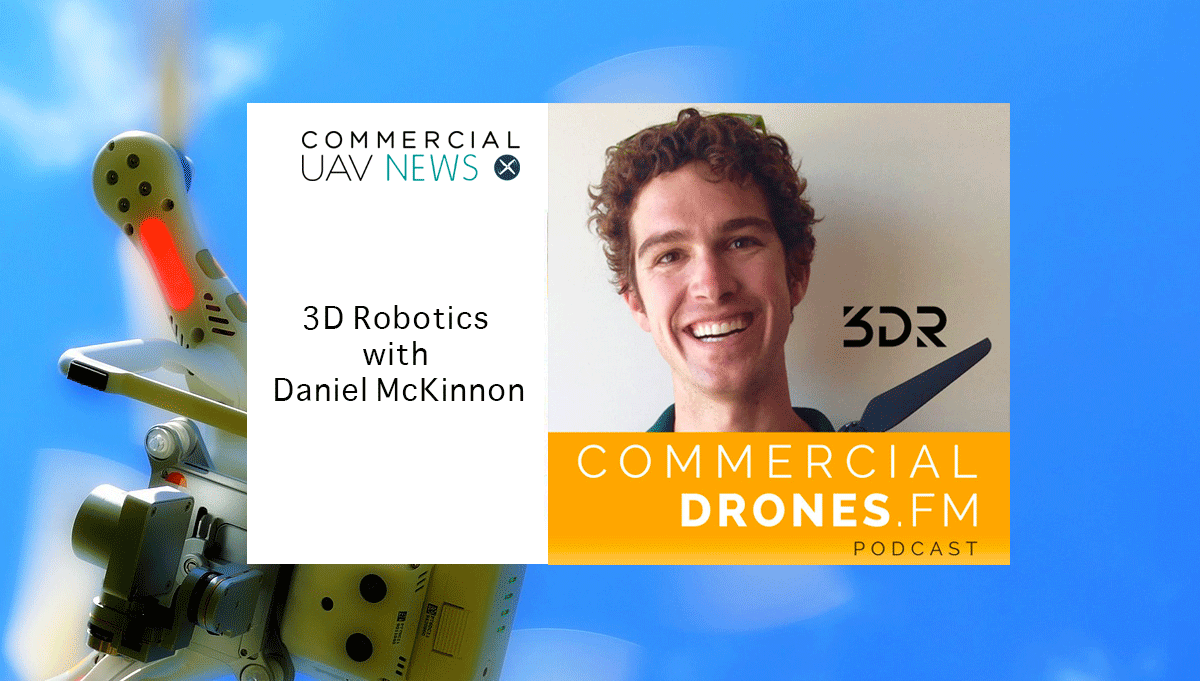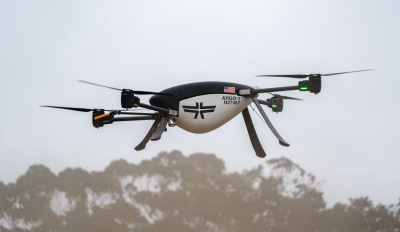3D Robotics (3DR) was back in the news recently with an announcement of a new round of funding, which moves along the company’s work to transition themselves into an enterprise software player in a definitive manner. Their launch of Perimeter Scan, a brand new flight mode for AEC professionals, further showcases this transition from hardware to software as well as their primary focus on creating a relevant drone products for construction professionals.
Daniel McKinnon is VP of Product at 3DR, but he’s been focused on how the company was going to create products for the enterprise market for a long time now. We’ve connected with him in the past, but on episode #45 of the Commercial Drones FM podcast - 3D Robotics with Daniel McKinnon - Dan joins host Ian Smith to discuss what this transition has mean to 3DR, how they came to focus on the construction industry and much more.Ian provided some further insight around a few of the topics they discussed, including where the real issue with adoption is for operators, what needs to happen before drones turn into just another tool in the toolkit for professionals and plenty more. Read through the additional insights before or after listening to the podcast below. You can also listen to the episode on iTunes or GooglePlay. Jeremiah Karpowicz: There’s no way to talk about 3DR without discussing their shift to the enterprise space, but it was certainly telling to hear the enterprise market was always one they had on their radar. What struck you the most about their pragmatic approach to figuring out which enterprise industry they wanted to focus on?Ian Smith: It sounds like they put quite a bit of thought into choosing the construction vertical. As we know, there is no shortage of industries in which drones can make an impact. However, they're definitely not breaking the mold here. Construction sites are very well-suited for drone operations, especially for photogrammetry. The size of construction sites is usually small enough so that the drone is always in visual line of sight, flight times are within a single battery, and the amount of decision-making data that can be gleaned from a single drone flight on a construction site can be worth tens of thousands of dollars in some cases. Creating a “golden egg” product that would appeal to the consumer drone market is something 3DR obviously wanted to do, and a major factor in them pivoting away from that stems from the incredible pace of the technology, which was underscored by the differences in cell phone technology today versus four years ago that you two discussed. When you bought your first drone in 2013, did you have any idea what might be available to you for that same price just four years later?Looking back at the first drone I built, I really didn't anticipate the technology moving that fast. As the months went on, however, it became apparent that I was going to have to be on my toes. The technology now is finally where I truly wanted it to be in 2013, which is great, as my original business idea (which shall remain a secret) could likely now finally be successfully deployed. We'll see if that happens! I thought one of Dan’s most interesting comments was about how he didn’t think the players in the drone industry are competing with one another right now, but instead competing with customers who aren’t embracing or even thinking about this technology. Do you think adoption issues right now are about users not seeing the benefits of the technology itself, or not seeing how such benefits will be relevant to them?I do somewhat disagree with Dan's answer as I have seen first-hand that the savvy early adopters are absolutely shopping around and finding out what other competitive solutions exist. Everyone wants to get the best bang for their buck and the cloud-based photogrammetric software solution space has no shortage of options these days. As far as adoption issues, I see that most are waiting for the true ROI to present itself on a mass scale. There's also the fact of different industries having different adoption cycles. Oil and gas is much slower to adopt than agriculture, for example. And construction sites are much smaller and better suited for drones than agriculture. And residential real estate is even smaller still, and lent itself to be the context of some of the first commercial drone operator "gold rushes". It's all relative in this case.That question of value ties into what Dan mentioned as the number one use case for drones being to augment survey efforts. Is it helpful to simplify the impact of the technology in this manner?Definitely. Simplifying the technology's impact in terms of what is relevant or understandable from an adopter's perspective is key. Also, there isn't too much that's different from an operational or adoption perspective between a regular old aerial survey and a construction site survey. Just be careful if you start calling yourself a surveyor! There are laws protecting against using that term incorrectly if you are not certified by the state. Getting UAV technology to eventually be thought of as just another tool is something we’ve talked about, and was even something 3DR CEO Chris Anderson mentioned was his goal in a recent article. Do you think something will need to inherently change with the technology before we get there though? For example, will that only happen once the autonomous capabilities of drones are more fully developed and regulatory issues with that kind of operation are sorted out? Or do we simply need to work our way through this adoption curve?I really think we just need to work our way through the adoption curve. The hardware and software improvements absolutely make it more easy to jump in (smaller, more rugged drones for the job site and safer, more automated flight systems). Post-processing of data with machine learning and artifical intelligence/computer vision will be big drivers. Imagine if I came up to you and said I could sell you a drone and a piece of software to go with it and you'll be able to draw your own conclusions, rather than offering the same deal but the conclusions are drawn for you, automatically, based on historical data? The steepness of the technology curve is directly correlated with the pace of technological development.Subscribe
The information you submit will be stored and used to communicate with you about your interest in Commercial UAV News. To understand more about how we use and store information, please refer to our privacy policy.
May 31, 2017
The Evolution of 3DR – Commercial Drones FM Podcast Insights
















Comments